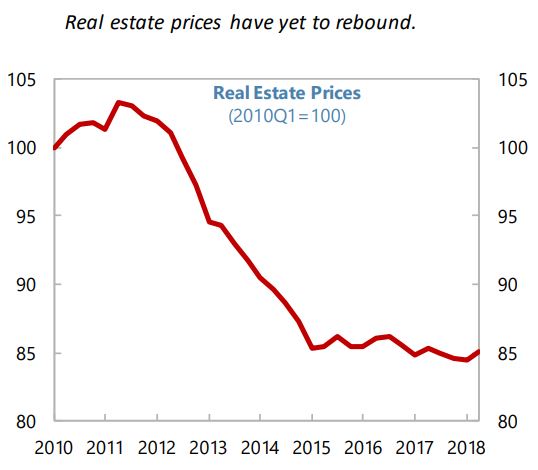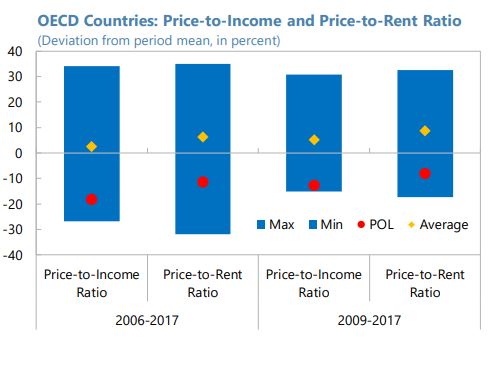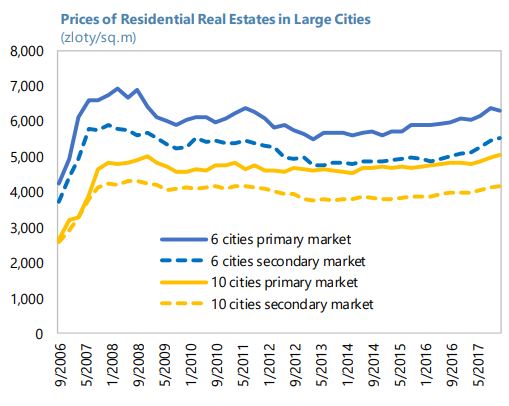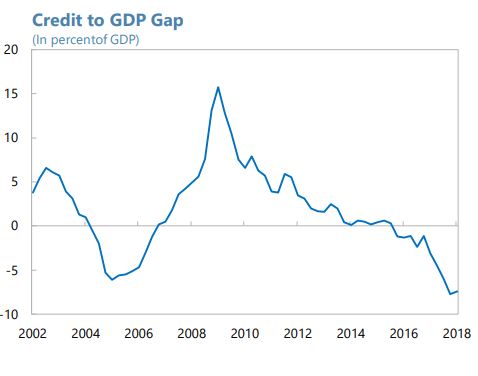Friday, February 8, 2019
Improving Youth Labor Market Outcomes in Emerging Market and Developing Economies
From a new IMF Staff Discussion Notes on youth employment:
“Economic development and growth depend on a country’s young people. With most of their working life ahead of them they make up about a third of the working-age population in the typical emerging market and developing economy. But the youth in these economies face a daunting labor market—about 20 percent of them are neither employed, in school, nor in training (the youth inactivity rate). This is double the share in the average advanced economy. Were nothing else to change, bringing youth inactivity in these economies down to what it is in advanced economies and getting those inactive young people into new jobs would have a striking effect. The working-age employment rate in the average emerging market and developing economy would rise more than 3 percentage points, and real output would get a 5 percent boost.
- A two-pronged strategy focused on better learning opportunities and improved job prospects for young people is needed. Secondary and postsecondary schooling has doubled over the past 25 years in the average emerging market and developing economy, which is impressive. But it will take further improvements in education and learning opportunities to close the gap with advanced economies, respond to technology-driven changes in the nature of work, and cope with aging populations. At the same time, young people who are not in school need help so they can find their place in the labor market. This discussion note draws on new analyses that use macro- and microeconomic data to look at how broad structural policies, including labor and product market reforms, can address challenges in the youth labor market.
- Poor labor market outcomes for youth can be traced in part to large and persistent gender gaps. Young women’s inactivity rate, at about 30 percent in the average emerging market and developing economy, is almost twice that of young men. Some of this can be explained by the effects of marriage and children on young women’s employment prospects. The right policies can make a difference. For example, when women receive equal employment protection under the law, the gender gap in employment and participation is smaller; women’s outcomes are better without men’s outcomes being worse—for workers of all ages.
- In areas that are more vulnerable to automation fewer young men—and to a lesser extent, older men—participate or are employed. As technology makes it easier to substitute capital for labor, men may contend with a tougher labor market. Targeted expansion in the social safety net, enhanced general education, and active labor market policies may help the young better cope with such disruptions.
- Aggregate youth unemployment in all economies is twice as sensitive to overall demand as adults’, underscoring how countercyclical macroeconomic policy can help protect young people from economic fluctuations. As emerging market and developing economies continue to develop and formal employment—which is more sensitive to the business cycle—rises, prompt countercyclical policy will be imperative.
- Everyone in emerging market and developing economies seems to benefit from broad policies that enhance the flexibility of the formal labor market and improve job quality—there is no trade-off between youth and adults’ job prospects, even though young people tend to benefit more. Lower business start-up costs, more openness to trade, and encouraging greater competition and entrepreneurship also point to better youth outcomes. These findings are consistent with the very strong positive correlation between youth and adult employment across emerging market and developing economies. Broad structural reforms should therefore be part of the toolkit, alongside more targeted improvements in education and active labor market policies.”
Continue reading here.
From a new IMF Staff Discussion Notes on youth employment:
“Economic development and growth depend on a country’s young people. With most of their working life ahead of them they make up about a third of the working-age population in the typical emerging market and developing economy. But the youth in these economies face a daunting labor market—about 20 percent of them are neither employed, in school, nor in training (the youth inactivity rate).
Posted by at 10:47 AM
Labels: Inclusive Growth
Dani Rodrik on Industrial Policies
From a new VoxDev post by Dani Rodrik:
“A new generation of work has been moving us beyond the largely ideological debates of the past to a more contextual, pragmatic understanding. The most recent strand is rooted in two developments. One of these is the indisputable economic success of China, a country that has made liberal use of a diverse array of industrial policies: cheap loans, public ownership, local-content requirements, export subsidies, and technology-transfer requirements. The other is the dissatisfaction with Washington Consensus-type policies, which in Latin America and elsewhere produced weak returns in terms of structural change and productive diversification.
The Inter-American Development Bank has been at the forefront of the new pragmatic approach, producing a series of case studies of successful and less successful interventions in Latin America. These studies analyse in some detail the nature of public-sector engagement with the private sector in a range of tradable industries (Sabel et al. 2012, IDB 2014, Fernández-Arias et al. 2016). One important difference from the earlier tradition of case studies is that these pay much greater attention to methodological issues and the problems of causal inference. Consequently, they are duly careful about the conclusions that can be drawn. Nevertheless, they provide considerable insight about appropriate institutional frameworks.
These studies build on existing works emphasising the role of disciplined public-private collaboration as a “search engine” for identifying the most important constraints faced by entrepreneurs, as well as the most appropriate mechanisms for alleviating such constraints (Hidalgo et al. 2007, Hausmann et al. 2005, Rodrik 2007, 2008, Sabel 2007). When designed appropriately, public–private collaboration can ameliorate both of the risks identified above: lack of information and political capture. Their work draws on the experience of successful practitioners (e.g. Ghezzi 2017), while informing them in turn.”
Continue reading here.
From a new VoxDev post by Dani Rodrik:
“A new generation of work has been moving us beyond the largely ideological debates of the past to a more contextual, pragmatic understanding. The most recent strand is rooted in two developments. One of these is the indisputable economic success of China, a country that has made liberal use of a diverse array of industrial policies: cheap loans, public ownership, local-content requirements, export subsidies,
Posted by at 10:41 AM
Labels: Inclusive Growth
Housing View – February 8, 2019
On cross-country:
- European Mortgage Markets – European Mortgage Federation
- Romano Prodi: “We can show leadership in Europe now in support of affordable housing” An interview with the former European Commission President – Housing Europe
- An action plan for affordable housing in the EU – Housing Europe
- The Sharing Economy and Housing Affordability: What Impact? What Solutions? – Housing Europe
On the US:
- Dynamism Diminished: The Role of Housing Markets and Credit Conditions – University of Chicago
- Zoning Reform Alone Won’t Make Housing More Affordable – Bloomberg
- How Affordable Housing Can Improve the American Economy – Citylab
- No, Zoning Reform Isn’t Magic. But It’s Crucial. – Citylab
- Fewer Homes for Median Earners – New York Times
- Perspectives on Housing Supply and Affordability – NYU Furman Center
- The Airbnb Effect: It’s Not Just Rising Home Prices – Citylab
- Does Upzoning Boost the Housing Supply and Lower Prices? Maybe Not. – Citylab
- Mortgage Risk Since 1990 – Federal Housing Finance Agency
- In my back yard: Neighbourhood spillovers in mortgage foreclosure – VoxEU
- The Airbnb Effect: It’s Not Just Rising Home Prices – Citylab
- Upzoning Chicago: Impacts of a Zoning Reform on Property Values and Housing Construction – Urban Affairs Review
- Federal Reserve policy and housing: A goal too far – Economic Analysis and Policy
- What Modern-Day Housing Discrimination Looks Like: A Conversation with the National Fair Housing Alliance – Zillow
- How Minimum Zoning Mandates Can Improve Housing Markets and Expand Opportunity – The Aspen Institute
- To overcome its housing crisis, Calfornia needs YIMBY to become the new NIMBY – Los Angeles Times
- Mortgage rates fall on worries about global economy – MarketWatch
On other countries:
- [Australia] Australia’s Housing Downturn Deepens as Prices Hit 2016 Levels – Bloomberg
- [Australia] RBA Seen Riding Out Australia Property Slump If Jobs Stay Robust – Bloomberg
- [Australia] Australia Keeps Rates on Hold Despite Pressure from Property Slump – Bloomberg
- [Canada] Canada’s banking regulator says mortgage stress test must be monitored – Reuters
- [Netherlands] Dutch banks see market share in home mortgage lending stabilize – De Nederlandsche Bank
- [New Zealand] The New Zealand real estate problem, with reference to Palmerston North – Marginal Revolution
- [Nigeria] Land grabbers resurgence in Lagos threatens homeownership – The Guardian
- [Panama] Panama’s property prices are booming – Global Property Guide
- [United Kingdom] Would rent controls work in London? – Financial Times
Photo by Aliis Sinisalu
On cross-country:
- European Mortgage Markets – European Mortgage Federation
- Romano Prodi: “We can show leadership in Europe now in support of affordable housing” An interview with the former European Commission President – Housing Europe
- An action plan for affordable housing in the EU – Housing Europe
- The Sharing Economy and Housing Affordability: What Impact? What Solutions? – Housing Europe
Posted by at 5:00 AM
Labels: Global Housing Watch
Wednesday, February 6, 2019
House Prices in Italy
From the IMF’s latest report on Italy:
Posted by at 11:29 AM
Labels: Global Housing Watch
Housing Market in Poland
From the IMF’s latest report on Poland:
“Current strong housing demand is financed to a greater extent than before the GFC with buyers’ own resources. Rising construction costs have slowed the supply of new housing, and nominal house prices in some regions have risen to pre-GFC levels. Nonetheless, affordability remains comfortable owing to strong growth of household incomes.”
From the IMF’s latest report on Poland:
“Current strong housing demand is financed to a greater extent than before the GFC with buyers’ own resources. Rising construction costs have slowed the supply of new housing, and nominal house prices in some regions have risen to pre-GFC levels. Nonetheless, affordability remains comfortable owing to strong growth of household incomes.”
Posted by at 9:29 AM
Labels: Global Housing Watch
Subscribe to: Posts










